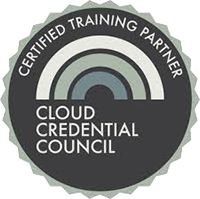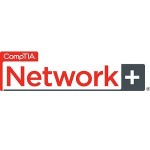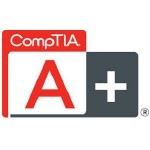Description
CompTIA A+ Support Skills courses are intended for students wishing to qualify with CompTIA A+ Certification. A+ certification is designed to help students become entry-level IT technicians. A+ Certification is internationally endorsed and recognized as the only benchmark vendor-neutral qualification for PC support and troubleshooting. Indeed, A+ Certification is a prerequisite qualification for employment (and is endorsed) by many leading computer manufacturers and vendors on a global basis.
Successful candidates will have the knowledge required to assemble components based on customer requirements, install, configure and maintain devices, PCs and software for end users, understand the basics of networking and security/forensics, properly and safely diagnose, resolve and document common hardware and software issues while applying troubleshooting skills. Successful candidates will also provide appropriate customer support and understand the basics of virtualization, desktop imaging, and deployment. – CompTIA A+ Syllabus
This 4-day hands-on course is designed to prepare students for the 220-801 A+ exam. It focuses on PC, laptop, printer, and network hardware technologies and support procedures. This courseware bears the seal of CompTIA Approved Quality Content. This seal signifies this content covers 100% of the exam objectives and implements important instructional design principles. CompTIA recommends multiple learning tools to help increase coverage of the learning objectives. The contents of this training material were created for the CompTIA A+ Certification 220-801 exam covering the 2012 Edition A+ certification exam objectives
Audience:
This course is intended for students wishing to qualify with CompTIA A+ Certification for PC Support professionals. It is also suitable for students wanting to improve their skills in PC support and administration. By completing this course, students will also be assisted with entry into a career in ICT. This course will particularly benefit students pursuing a career in supporting desktop personal computer users, in job roles such as Support Engineer, Maintenance Engineer, Desktop Engineer, Computer Administrator, or PC Support Analyst. Study of the course can also help to prepare for other, similar technical support qualifications and act as groundwork for more advanced training, including CompTIA Network+ or CompTIA Server+, CCNA, and MCSE.
LEARNING OBJECTIVES
Individuals certified at this level will have demonstrated their understanding of:
- Identify types and characteristics of PC and laptop components, including motherboard, CPU, memory, and storage, input, and output devices.
- Install and configure peripheral devices and system components.
- Install and configure print devices.
- Install and configure wired and wireless LAN links and internet access devices.
- Perform basic PC maintenance while working safely and responsibly.
- Communicate effectively with customers.
BENEFITS
Completing this course will help students to pursue a career in computer and network support. This course will particularly benefit students pursuing a career in supporting desktop personal computer users, in job roles such as Support Engineer, Maintenance Engineer, Desktop Engineer, Computer Administrator, or PC Support Analyst. Study of the course can also help to prepare students for vendor-specific technical support qualifications and act as groundwork for more advanced training.
PREREQUISITES
Students should have some basic experience of using a PC, Windows, and browsing the web. Specifically, it is recommended that students have the following skills and knowledge before starting this course:
- Use a keyboard and mouse.
- Recognize the main components of a PC and different data media such as USB drives and DVD.
- Start the computer and navigate the desktop.
- Use Windows Explorer to create directories and subdirectories and manage files.
- Use Internet Explorer to view websites.
COURSE MATERIALS
Participants will receive the following:
- A participant handbook
- A reference book with materials pertaining to the training
The course consists of two volumes, with a study volume, containing indexed notes and review questions, and a companion volume, containing exam objectives mapping, exam information, practical labs, answers to review questions, and a comprehensive glossary. The course also comes with an online practice exam and links to Professor Messer online video tutorials.
ABOUT THE EXAMINATION
- The exam is closed-book format. Participants may bring and is delivered by computer at an Authorized Prometric Testing Center.
- The exam consists of up to 90 multiple-choice and performance-based questions. Multiple-choice questions in CompTIA exams ask a candidate to select one or more correct answers to a specific question, and the candidate clicks on the correct answer or answers. Performance-based questions require the candidate to perform a task or solve a problem in simulated IT environments. For each performance-based question, the exam prompts the candidate to perform a specific task or solve a specific problem. A simulated environment is then launched in which the candidate completes the required steps.
- A minimum score of 675 on a scale of 100-900 is required to pass the exam. Students will know at the end of the exam whether they have been successful or not.
- The exam lasts 90 minutes.
- Students must pass BOTH 220-801 AND 220-802 to obtain CompTIA A+ certification.
AGENDA
Day 1 / Peripherals and Adapters
- Safety Procedures • Health and Safety Laws • Electrical Safety • Cable Management • Lifting Techniques and Weight Limitations • Static Electricity and ESD • Labs • Implementing an Anti-ESD Service Kit
- Motherboard Components • System Case Types • Disassembling a PC • Motherboard Layout • Bus Architecture • Motherboard Components
- Power Supplies • Electrical Circuits • Power Supply Unit (PSU) • Installing a Power Supply Unit • Labs • Identifying PC Components
- Connection Interfaces • I/O Ports and Cables • Legacy Port Types • USB Ports • SCSI • Display Connectors and Cable Types • Audio Connectors • Labs • Identifying PC Ports
- Peripherals and Expansion Slots • Basic Input Devices • Touch Screens and Digitizers • Installing and Configuring Peripherals • Expansion Bus • Adapter Cards
- Output and Multimedia Devices • Display Devices • Comparing Display Technologies • Video Adapters • Audio Devices • Multimedia Input Devices • Labs • Connecting Peripheral Devices
Day 2 / System Components
- Mass Storage Devices • Storage Devices • Hard Drives • Host Bus Adapters • Installing Disk Drives • RAID
- Removable Storage Devices • Optical Disc Storage • Flash Memory • Floppy Drives • Tape Drives • Labs • Adding Storage Devices
- System Memory • Memory Types • Memory Characteristics • Installing and Upgrading Memory • Labs • Upgrading Memory
- Processors • Central Processing Unit (CPU) • CPU Architectures • Other CPU Features • CPU Packaging • Cooling Systems • Removing a CPU • Installing or Upgrading a CPU
- BIOS • CMOS Setup • BIOS Component Information • Configuring the Boot Sequence • Configuring Onboard Devices • BIOS Security • Firmware Upgrades • Using Built-in Diagnostics • Labs • CMOS Setup
- Custom Configuration • Configuring Computers for Business • Configuring Computers for Home Use
Day 3 / Laptops and Printers
- Laptops • Portable Computers • Laptop Components • Upgrading Laptops • Power Supplies for Portable Computers
- Printer Types • Printer Types • Laser Printers • Inkjet Printers • Dot Matrix Printers • Thermal Transfer Printers • Scanners
- Installing and Configuring Printers • Installing and Configuring a Printer • Maintaining Printers • Routine Maintenance of Laser Printers • Maintaining Other Printer Types • Labs • Installing a Printer
- Preventive Maintenance • Environmental Controls • Power Problems • MSDS Documentation • Disposal and Recycling • Labs • Cleaning and Preventive Maintenance
- Professionalism and Communication • Customer Service Skills • Communication Skills • Professionalism • Handling Customer Complaints • Incident Response Policy • Labs • Upgrading the Graphics Adapter • Removing and Installing FRUs
Day 4 / Networking Essentials
- Network Hardware • Basic Network Concepts • Network Topologies • The OSI Model • Network Components • Twisted-Pair Network Cabling • Other Network Cabling Types
- TCP/IP Essentials • TCP/IP • Internet Protocol and IP Addressing • Configuring TCP/IP • IP Version 6 • TCP and UDP • DNS • Internet Application Protocols • Other TCP/IP Application Protocols
- Wireless Networking • Wireless Networks • WLAN Security • Configuring an Access Point • Wireless Communication Ports • Labs • Building a Network
Internet Access • The Internet • Accessing the Internet • Dial-up Access • ISDN • xDSL (Digital Subscriber Line) • Other Broadband Services • Configuring Firewalls • Voice-over-IP









